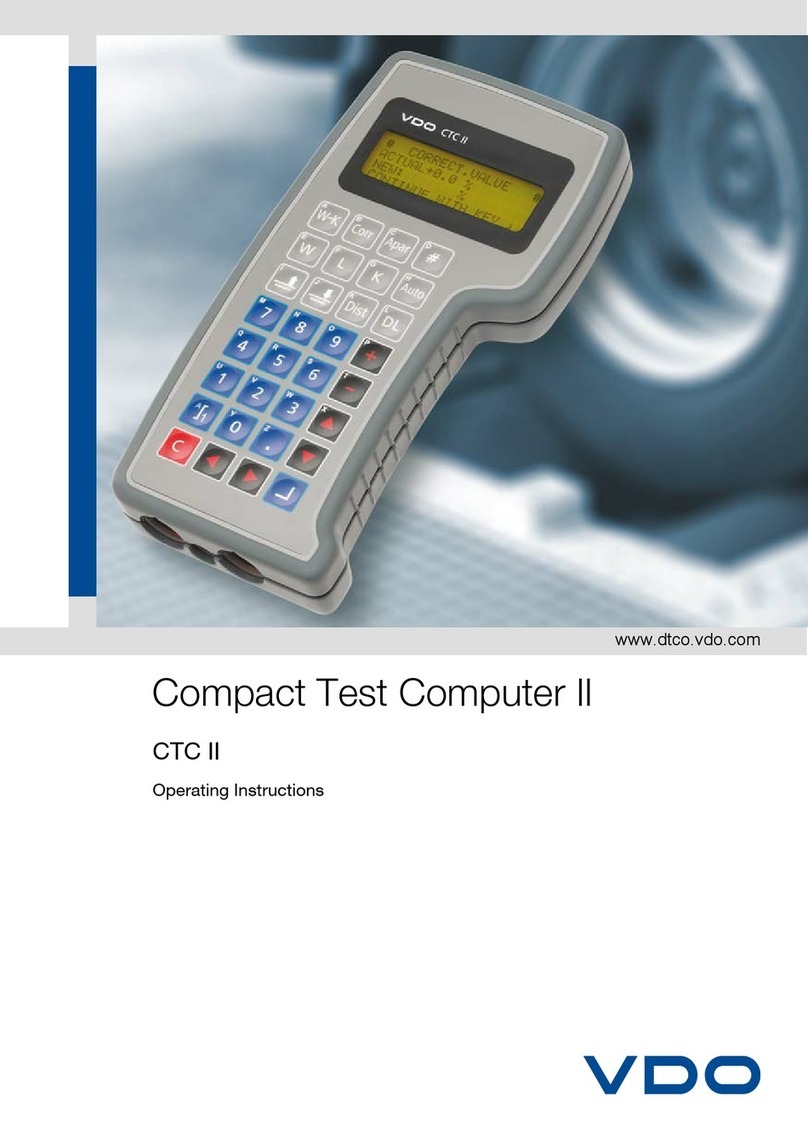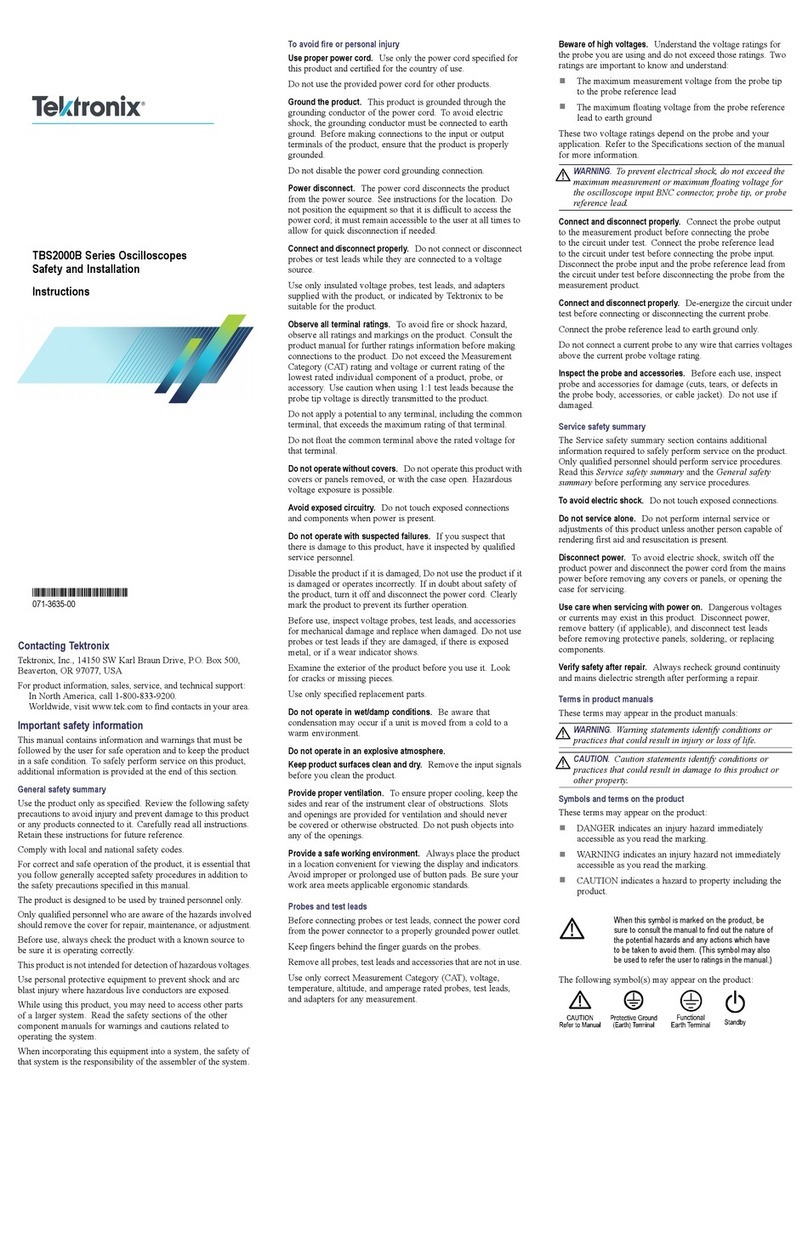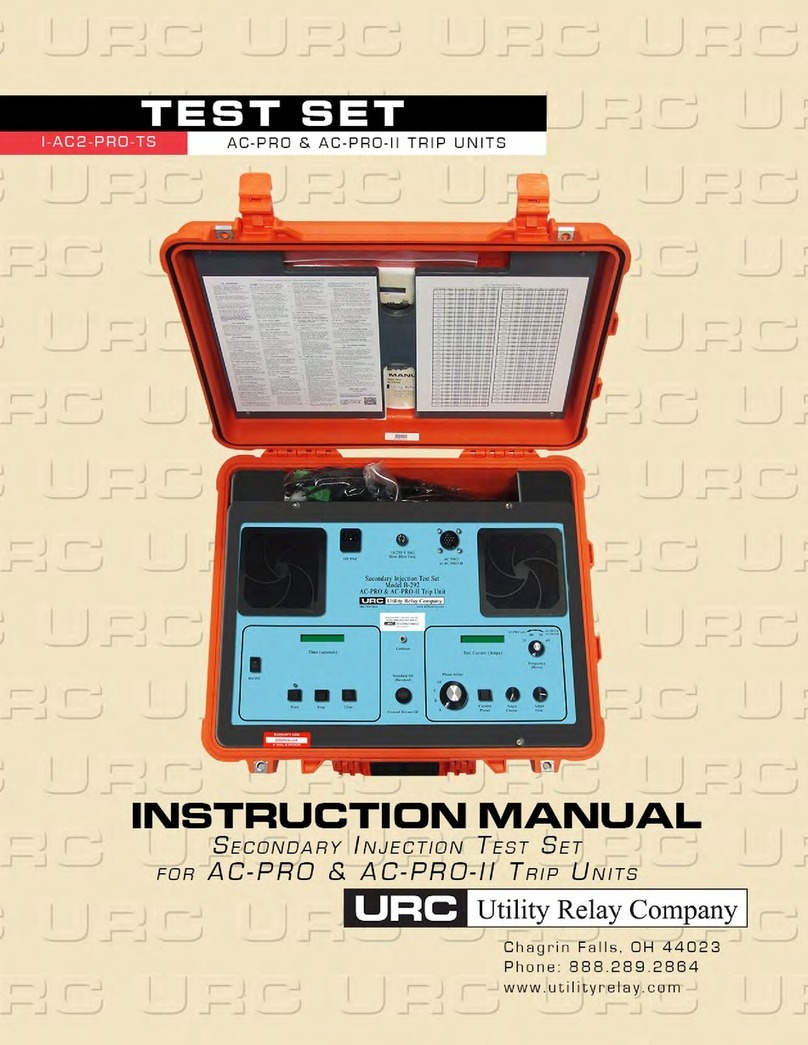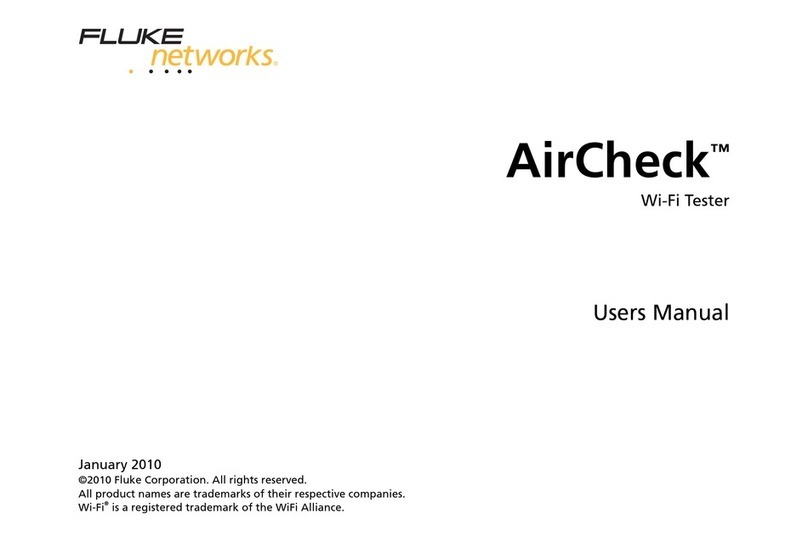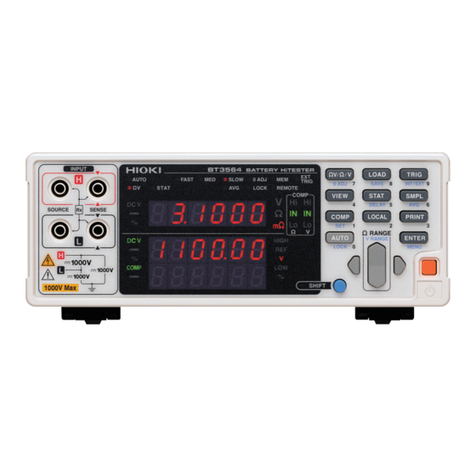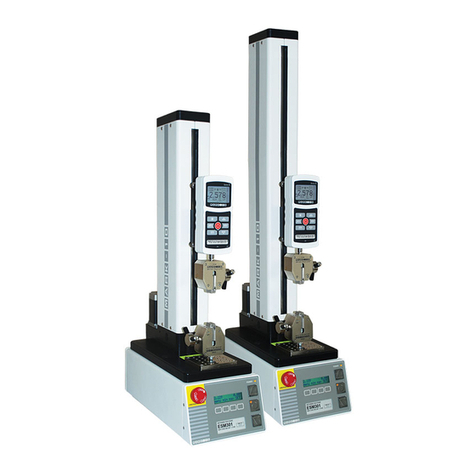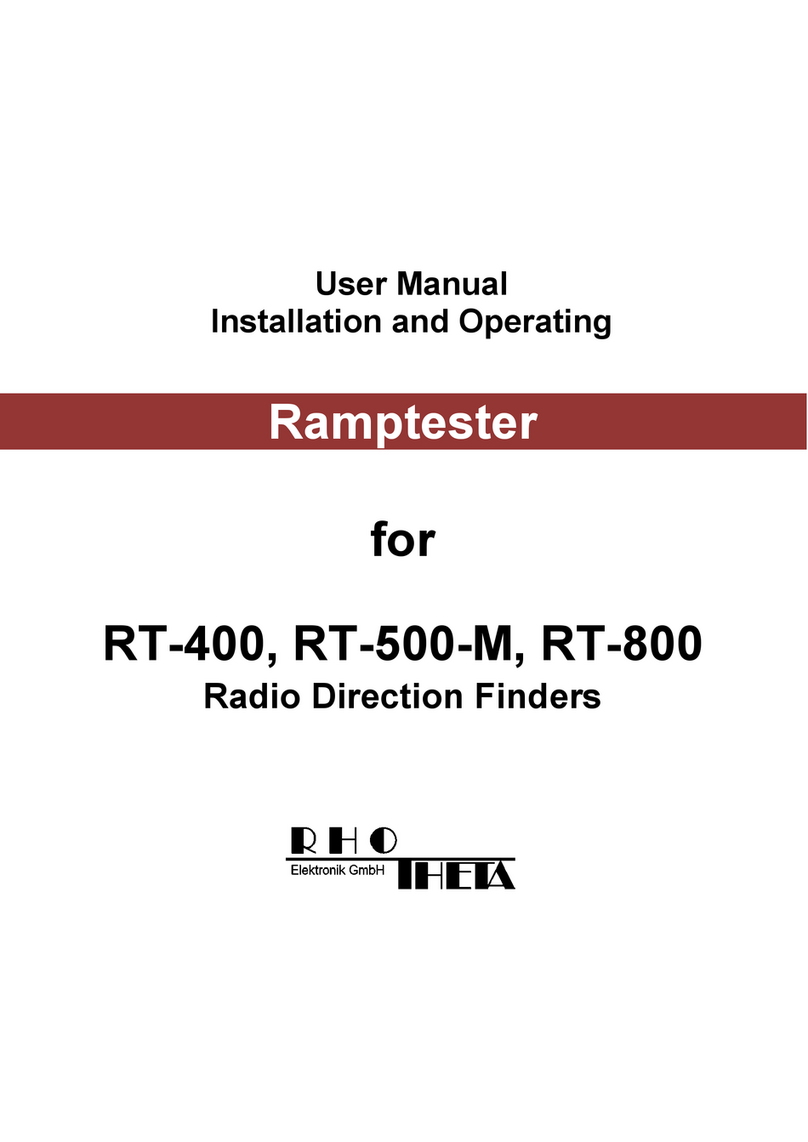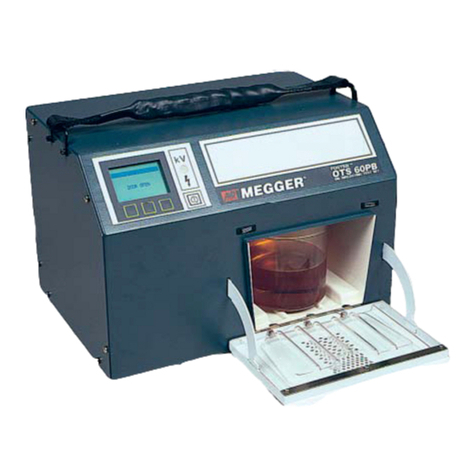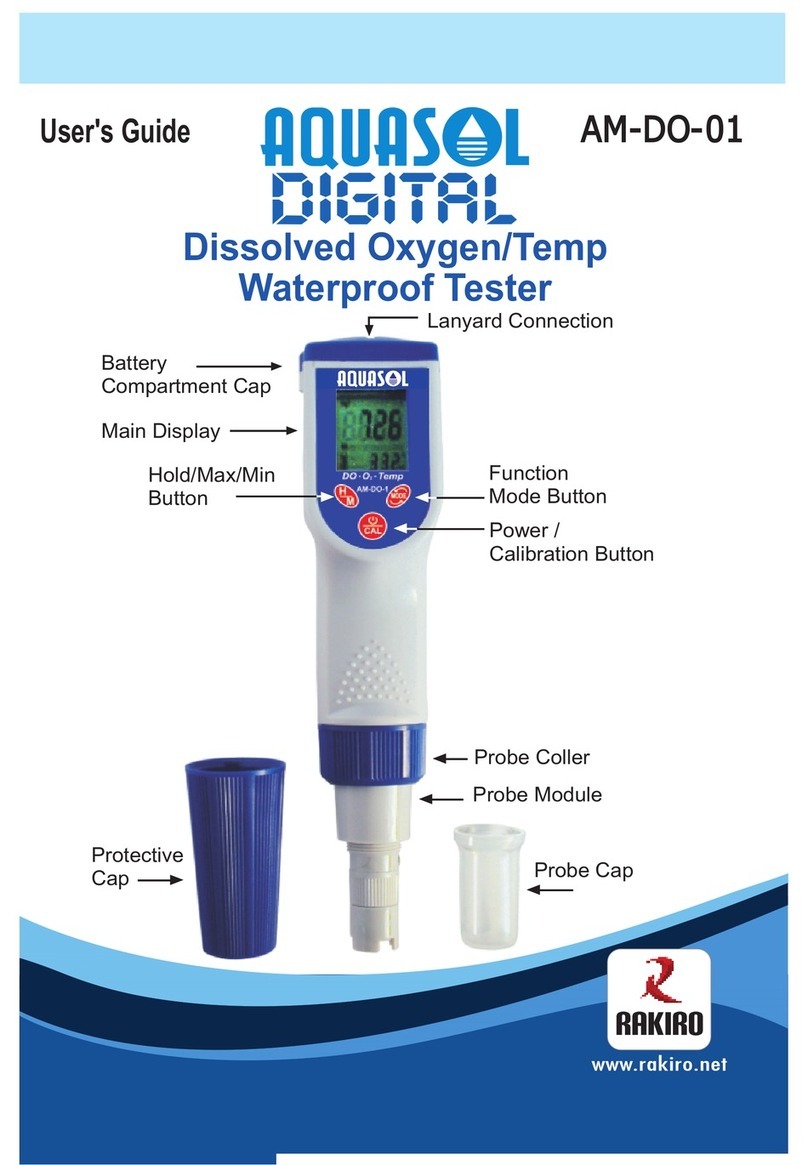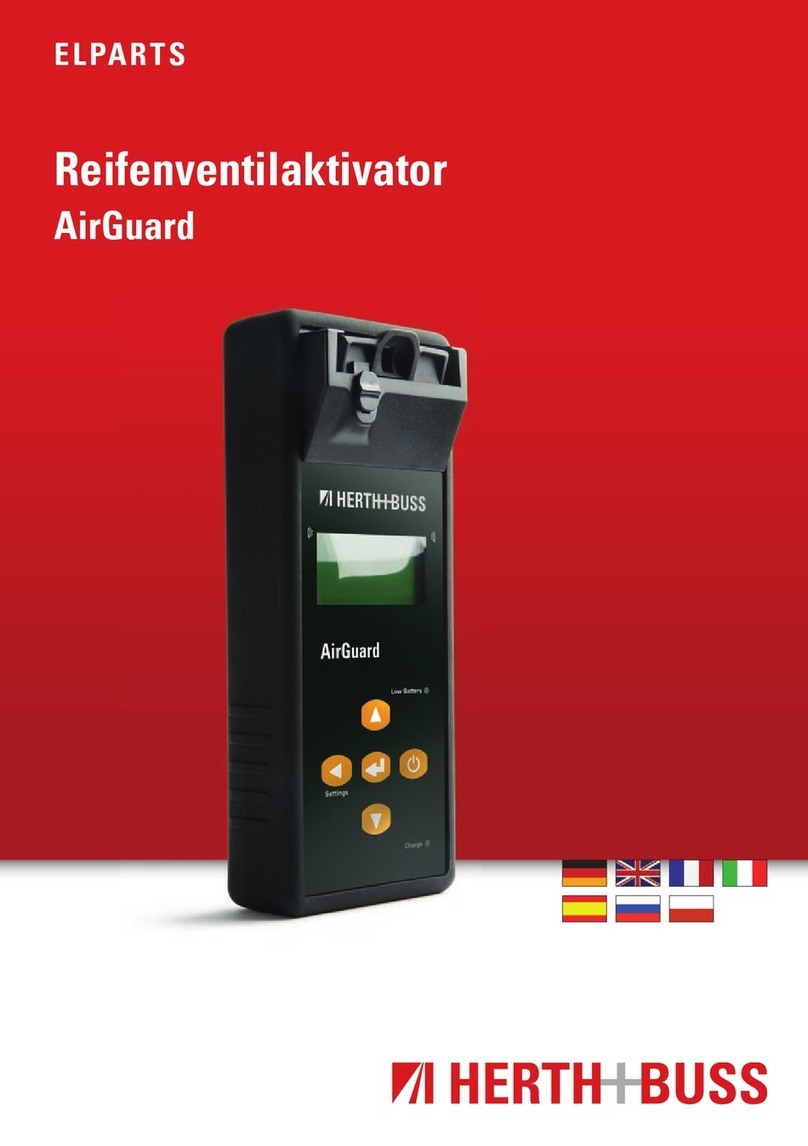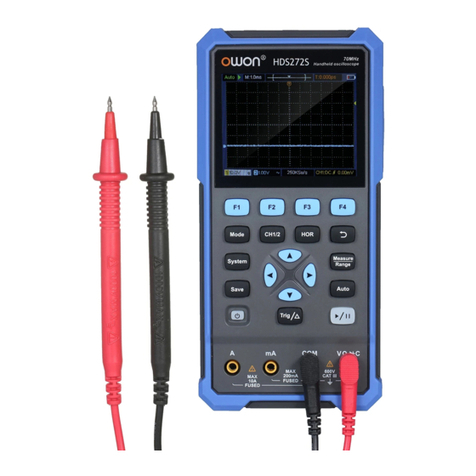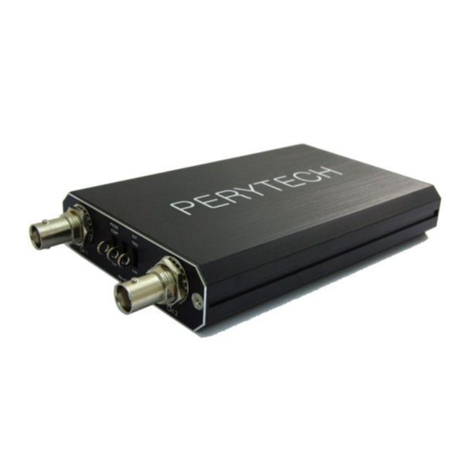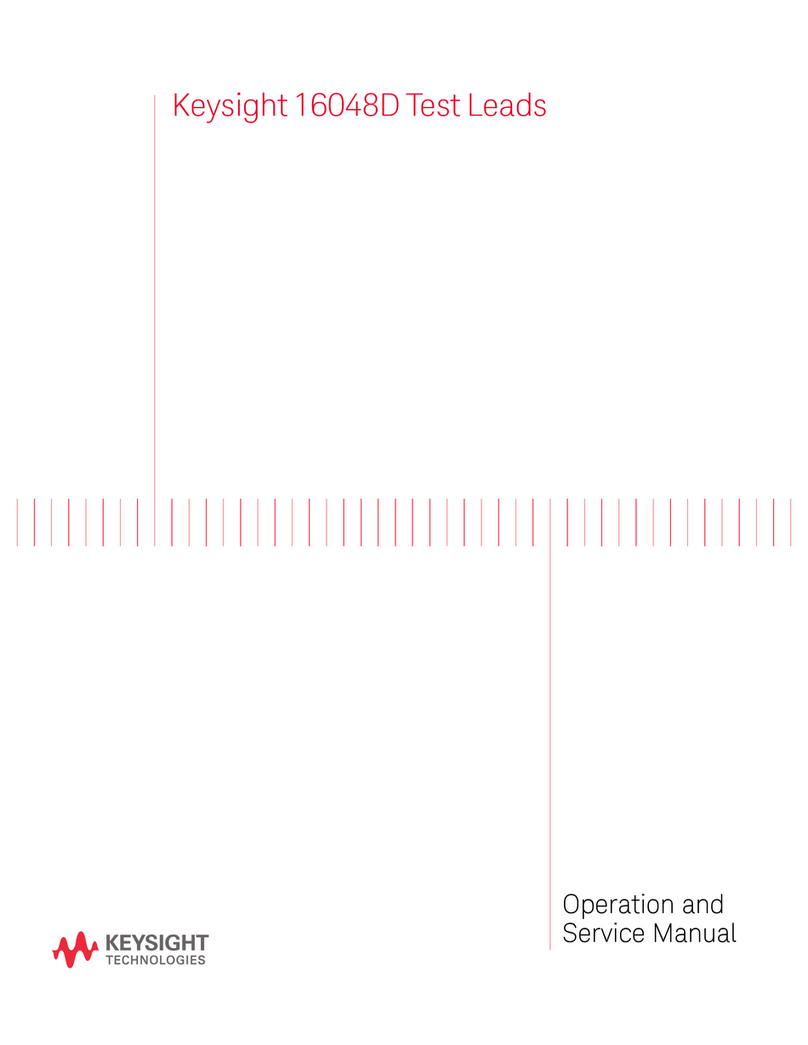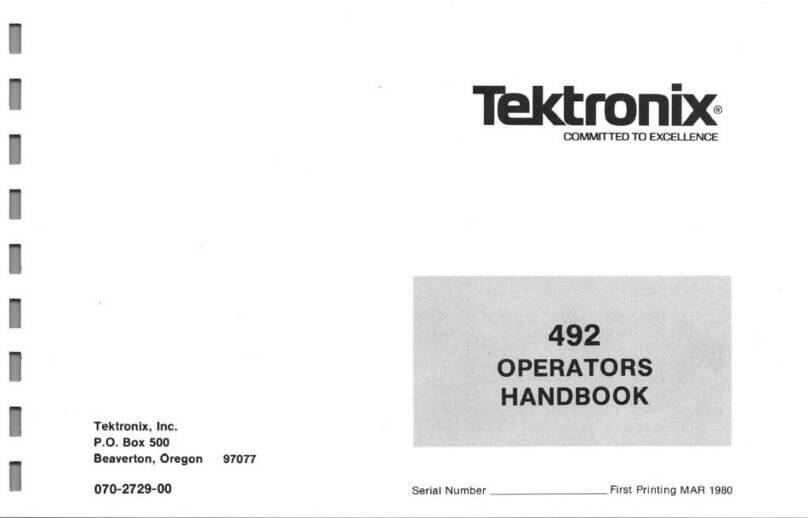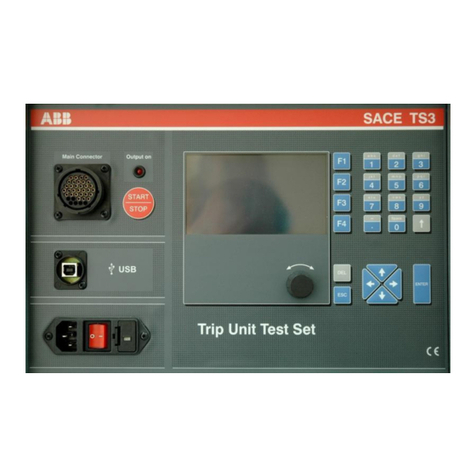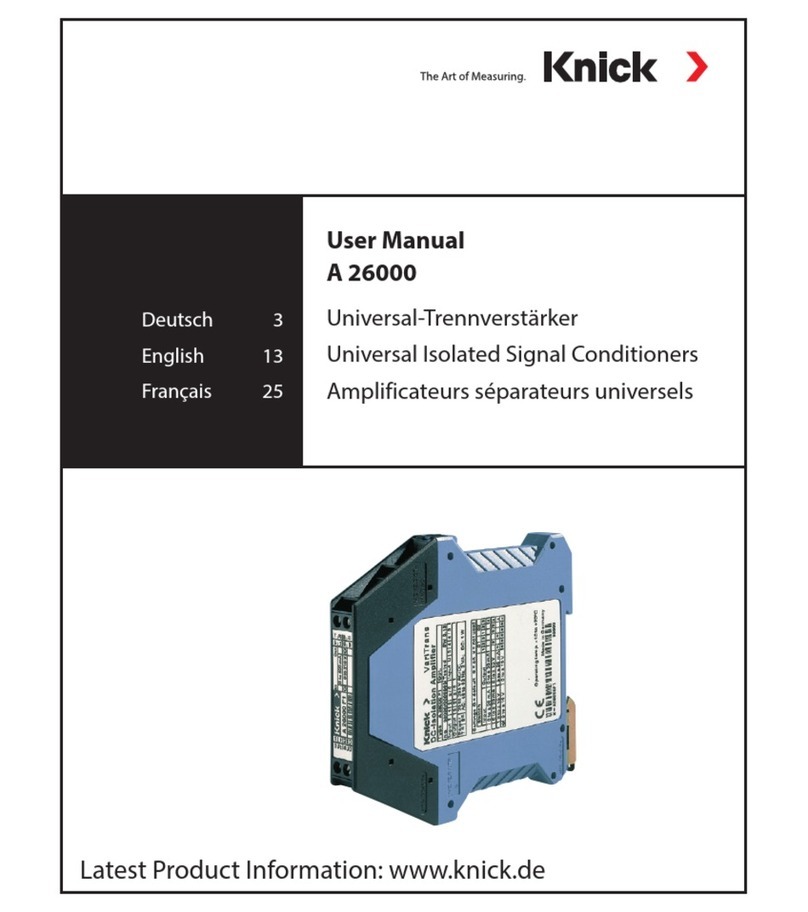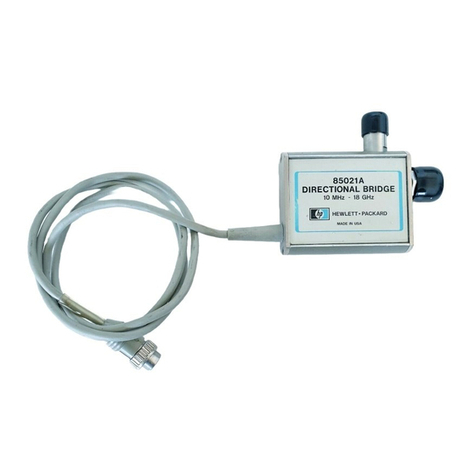VDO CTC II User manual

www.dtco.vdo.com
CTC II –
Compact Test Computer II
Roller Interface Module
Installation Instructions
Intended only for the servicing and installation of the CTC II and
the Roller Interface Module
This documentation may not be transferred to third parties
without the written permission of the Continental Trading GmbH.

Roller Interface Module
Installation Manual Imprint
A2C59512810 © Continental Trading GmbH II
Roller Interface Module • Edition 01/2009
The information contained in this documentation is subject to change without
prior notice. In doing so, Continental Trading GmbH do not enter into any
obligation. The description is based on the information available at the time
this documentation was printed. We reserve the right to change technical
details in the descriptions, information and illustrations in this manual.
Continental Trading GmbH shall accept no liability for program errors and for
incorrect information in the documentation or for any consequential damages
arising from this.
CTC II, Roller Interface Module and DTCO®1381 are registered trademarks
of the Continental Corporation.
SmarTach®is a registered trademark of ACTIA.
SE5000 and SE2400 are registered trademarks of Stoneridge Electronics.
The above mentioned trademarks are used to some extent in following
document without special reference to their owners.
© by Continental Trading GmbH. All rights reserved.
Responsible for the content
Continental Trading GmbH
P.O. Box 16 40
78006 Villingen-Schwenningen
Germany
Internet www.dtco.vdo.com
E-mail tachograph@vdo.com
VDO – A trademark of the Continental Corporation

Roller Interface Module
Installation Manual Document History
A2C59512810 © Continental Trading GmbH III
Roller Interface Module • Edition 01/2009
Document History
As at: 21. January 2009
Date Chapter/
page Topic, revision, action taken
01/2009 First edition

Roller Interface Module
Installation Manual Table of Contents
A2C59512810 © Continental Trading GmbH IV
Roller Interface Module • Edition 01/2009
Table of Contents
Pictograms and what they mean........................................... 1
For your safety........................................................................ 2
Personnel and technical requirements .......................................................... 2
General safety instructions ........................................................................... 3
Notes on operation ........................................................................................ 4
Fitting instructions ......................................................................................... 5
Notes on the sealing of the Roller Interface Module ..................................... 5
Notes on commissioning the test stand ........................................................ 6
Product overview.................................................................... 7
Connection overview ..................................................................................... 7
Connection configuration .............................................................................. 9
Operating status of the Roller Interface Module ......................................... 10
Installing the Roller Interface Module................................. 11
Installing connections .................................................................................. 11
Connection J1 – Power supply ................................................................... 12
Connection J2 – Magnetic valve for lifting bar ............................................ 13
Connection J3 – Roller sensor .................................................................... 14
Connection J4 – Light barrier ...................................................................... 15
Connection J13 – Trailing cable interface (optional) .................................. 16
Hardware prescaler SW1 ............................................................................ 19
Sealing the Roller Interface Module ............................................................ 20
Switching on the Roller Interface Module ................................................... 21
Switching off the Roller Interface Module ................................................... 21
Configuring the CTC II.......................................................... 22
An overview of the “Service” menu ............................................................. 23
An overview of the “Service” menu parameters .......................................... 24
Starting configuration .................................................................................. 27
Connecting the CTC II ................................................................................ 28
Programming the Bluetooth address ..................................................... 28
Checking field strength .......................................................................... 29
Configuring communication via a trailing cable ..................................... 31
Automatic roller adjustment ........................................................................ 32
Technical data....................................................................... 34
Accessories........................................................................... 35
Acceptance report ................................................................ 36
Appendix – Drilling jig for wall mounting........................... 38

Roller Interface Module Pictograms and what they mean
Installation Manual
A2C59512810 © Continental Trading GmbH 1
Roller Interface Module • Edition 01/2009
Pictograms and what they mean
The following pictograms are used in this manual to make you aware of a
particular circumstance or association.
The following additional symbols denoting danger are attached to the Roller
Interface Module:
This denotes conditions which must be fulfilled before you can carry out an
action or program command successfully.◄
Condition
This denotes practical tips for installation or for checking system
components.◄
Tip
This denotes legal regulations or contains explanations about device
associations and background knowledge.◄
Important
This denotes dangers which may cause material damage or injury to persons.
To avoid possible injury to persons, always pay special attention to the note(s)
pertaining to this pictogram.◄
Caution
Caution!
This denotes dangers which may cause injury to persons. To avoid possible
injury to persons, always pay special attention to the note(s) pertaining to this
pictogram.◄
Danger!
Electric shock upon contact with voltage-carrying parts when the housing is
open. Only authorised persons may open the housing.◄

Roller Interface Module For your safety
Installation Manual Personnel and technical requirements
A2C59512810 © Continental Trading GmbH 2
Roller Interface Module • Edition 01/2009
For your safety
Personnel and technical requirements
Requirements for
personnel
The service technician contracted to carry out the installation of the CTC II
components must have received specific training in installing CTC II
components.
In the following description, the service technician is expected to have
• comprehensive, occupation-specific knowledge and
• to be in complete control of the necessary and relevant tasks.
Technical
requirements
To enable the technician to carry out tasks reliably, the premises and
equipment must comply with the pertinent legal regulations of the country in
which they are used.
Before installing and using the Roller Interface Module, please read the safety
and operating instructions in this Chapter carefully.
Protect yourself and prevent damage to the test device and tachograph
components. ◄
Important

Roller Interface Module For your safety
Installation Manual General safety instructions
A2C59512810 © Continental Trading GmbH 3
Roller Interface Module • Edition 01/2009
General safety instructions
The basic requirement for working safely with the Roller Interface Module and
its components is a thorough knowledge of the general instructions, the safety
instructions and the safety regulations.
The service technician contracted to carry out the installation of the CTC II
components must have read and understood this documentation, including
the Chapters on safety.
Danger! Electric shock upon contact with voltage-carrying parts
The electric equipment in the Roller Interface Module operates by means of
dangerous electric voltage.
When the Roller Interface Module is open, it must be switched off – only then
may authorised persons carry out work on the module. Remove the key to
prevent anyone switching on the module accidentally.◄
Caution
Danger of explosion!
The Roller Interface Module may not be operated in areas which may be
endangered by explosions!
Do not use the Roller Interface Module near flammable liquids or gases! ◄
Caution
Danger of accidents!
While working on the module, adhere to the relevant trade association's safety
and accident prevention regulations.◄
Caution
Accident danger – rolling road test stand!
Work on the test stand equipment may only be carried out when the Roller
Interface Module is switched off. Remove the key to prevent anyone switching
on the module accidentally.◄
Caution

Roller Interface Module For your safety
Installation Manual Notes on operation
A2C59512810 © Continental Trading GmbH 4
Roller Interface Module • Edition 01/2009
Notes on operation
Designated use The Roller Interface Module is a CTC II component. It is used for the
inspection, commissioning, and programming of radio slot sized tachographs
(EC recording equipment and Non-EC tachographs) on a test stand. The
Roller Interface Module may only be used for the purpose for which it was
manufactured. The manufacturer is not liable for any damage caused by
improper use.
Moisture and
dampness
Prevent moisture or dampness from seeping into the module. The Roller
Interface Module may not be operated in the proximity of water. Do not place
any liquid container (like a tumbler, etc.) on or beside the module – this will
avoid any spillage getting into the device.
Environmental
requirements
Protect the Roller Interface Module from heat and cold. Do not place the Roller
Interface Module near heat sources (e. g. blowers, ovens, etc).
Do not place the test device in direct sunlight.
The ideal environmental temperature is around +25 °C.
Operating instructions Avoid excessive jolting and shaking of the module.
Cleanliness Prevent dust and dirt from getting into the module.

Roller Interface Module For your safety
Installation Manual Fitting instructions
A2C59512810 © Continental Trading GmbH 5
Roller Interface Module • Edition 01/2009
Fitting instructions
Power supply The Roller Interface Module may only be connected to the voltages stipulated
in this Installation Manual; see Chapter entitled “Technical data” on Page 34.
Connection cables When laying the cables, make sure that no one can stumble over them and
that no damage to the cables can be caused by other objects or by the effects
of heat.
Accessories No modifications to accessories may be made (EMC regulations). Never use
accessories which have not been recommended by the manufacturer – they
can cause accidents and operational disruptions.
Notes on the sealing of the Roller Interface Module
If sealing is required, the following sealing may be carried out for the Roller
Interface Module:
• Sealing of the housing cover.
The power supply installation must be carried out by an electrician.◄
Important
Danger of short-circuits!
Damaged cables can cause short-circuits, adverse effects and malfunctions.
Replace damaged cables immediately! ◄
Caution
The use of non-authorised accessories invalidates the CE certificate of
conformity!◄
Important
Always adhere to your country's valid legal regulations!◄
Important

Roller Interface Module For your safety
Installation Manual Notes on commissioning the test stand
A2C59512810 © Continental Trading GmbH 6
Roller Interface Module • Edition 01/2009
Notes on commissioning the test stand
This equipment may only be commissioned if the regulations pertaining to the
technical equipment and materials in their currently valid versions are
adhered to and national safety warnings are put up at the workplace/ rolling
road test stand.
1) The following warning notice must be put up in a highly visible location:
“Noise Zone, Wear Hearing Protection”.
2) The following sign measuring 200 x 300 (or 350) must be put up in a
highly visible location:
“During measuring, entry to the pit is forbidden”.
Supplier: Fa. Klar
Neuer Weg 12-16
D - 42111 Wuppertal
3) The cover plate of the rollers and projecting parts like light barriers, etc.
must be visibly flagged with a danger sign (yellow/black paint):
Supplier: Fa. Klar
Neuer Weg 12-16
D - 42111 Wuppertal
The operator is responsible for adherence to all valid safety regulations
and safety precautions.◄
Important

Roller Interface Module Product overview
Installation Manual Connection overview
A2C59512810 © Continental Trading GmbH 7
Roller Interface Module • Edition 01/2009
Product overview
Connection overview
Fig. 1: Connection overview
1Bluetooth address of the Roller Interface Module
2Bluetooth module
3Key switch
4Fuse
5Power connection; see the Chapter entitled “Connection J1 – Power supply” on
Page 12
6Power connection (screw connection)
7Lifting bar connection; see the Chapter entitled “Connection J2 – Magnetic valve
for lifting bar” on Page 13
8Lifting bar (screw connection)
9Roller sensor connection; see the Chapter entitled “Connection J3 – Roller
sensor” on Page 14
10 Roller sensor (screw connection)
14 1 2 3
456
81011 791213

Roller Interface Module Product overview
Installation Manual Connection overview
A2C59512810 © Continental Trading GmbH 8
Roller Interface Module • Edition 01/2009
Package contents • The connection cables for the roller sensor and the light barrier are 20 m
in length.
• Communication between the CTC II and the Roller Interface Module
takes place via Bluetooth (wireless).
• The power connection is not fixed to the device (not supplied).
11 Light barrier (screw connection)
12 Hardware prescaler; see the Chapter entitled “Hardware prescaler SW1” on
Page 19
13 Light barrier connection; see the Chapter entitled “Connection J4 – Light barrier”
on Page 15
14 Optional trailing cable interface; see the Chapter entitled “Connection J13 –
Trailing cable interface (optional)” on Page 16
The power supply installation must be carried out by an electrician.◄
Important
Danger of short-circuits!
No protective earth conductor is connected to the magnet valve of the lifting
bar.
The protective earth conductor must be externally connected to the double
roller set. Ensure that earthing is sufficient (cross-section at least 6 mm2).◄
Caution

Roller Interface Module Product overview
Installation Manual Connection configuration
A2C59512810 © Continental Trading GmbH 9
Roller Interface Module • Edition 01/2009
Connection configuration
Fig. 2: Terminal assignment– Roller Interface Module
J3SW1J4
ON
¼½ 1 12 3
LNPEPE
123
+ +
1234
N
12 34
12V DC12V DC
J2 J1
029.02.006
Roller Interface Module
Function Sign Terminal Symbol Description
J1 Power input 1 L L 230 V AC
2 N N 230 V AC
3 PE Protective earth conductor (PE)
J2 Lifting bar 1 L 230 V AC normal open contact (NOC)
2 L 230 V AC normal closed contact (NCC)
3 N N 230 V AC
4 PE Protective earth conductor (PE)
J3 Roller sensor 1 Roller sensor signal (white)*
2 + 12V DC (green)*
3 - Earth (brown)*
4 - Earth (colourless)*
J4 Light barrier 1 Light barrier signal (white)*
2 + 12V DC (brown)*
3 - Earth (blue)*
* Colour relates to the original sensor cable.
Function Symbol Description
SW1 Hardware prescaler 1 Position ON: 1 x sensor frequency
1/2 Position ON: 1/2 sensor frequency
1/4 Position ON: 1/4 sensor frequency
ON Always in ON position in normal
operation

Roller Interface Module Product overview
Installation Manual Operating status of the Roller Interface Module
A2C59512810 © Continental Trading GmbH 10
Roller Interface Module • Edition 01/2009
Operating status of the Roller Interface Module
The operating status of the Roller Interface Module is displayed by means of
a LED (1).
Colour Meaning
green The CTC II and the Roller Interface Module are
connected via Bluetooth.
green, flashing The Roller Interface Module is waiting to connect with
the CTC II.
red Communication error with the Bluetooth module,
e. g. Bluetooth module is not responding.
To rectify the error, switch the Roller Interface Module
off, then on again.
red, flashing Protocol error between CTC II and the Roller Interface
Module:
The Roller Interface Module breaks the connection with
the CTC II after some time and waits for a connection to
be established by the CTC II
1

Roller Interface Module Installing the Roller Interface Module
Installation Manual Installing connections
A2C59512810 © Continental Trading GmbH 11
Roller Interface Module • Edition 01/2009
Installing the Roller Interface Module
Installing connections
When choosing a location to mount the Roller Interface Module, please note
the following:
• The ideal environmental temperature is between +0 °C and +40 °C.
• The power supply installation must be carried out by an electrician.◄
Condition
Check the supply voltage before connecting and commissioning the Roller
Interface Module.
The system is factory-set at an input voltage of 100 to 240 V.◄
Caution
1
1 Loosen screw connection (1).
2 Push the end of the cable through the union nut, the washer and the cable
assembly into the housing interior.
3 Connect the wires as described in the connection diagram.
4 Tighten screw connection (1) and secure the cable.

Roller Interface Module Installing the Roller Interface Module
Installation Manual Connection J1 – Power supply
A2C59512810 © Continental Trading GmbH 12
Roller Interface Module • Edition 01/2009
Connection J1 – Power supply
Connection diagram
Captions
PE230 ~
J1
321
Fig. 3: Connection diagram plug J1, power supply
Roller Interface
Module – J1,
terminal
Function Crosssection
1L1mm
2
2N1mm
2
3PE1mm
2

Roller Interface Module Installing the Roller Interface Module
Installation Manual Connection J2 – Magnetic valve for lifting bar
A2C59512810 © Continental Trading GmbH 13
Roller Interface Module • Edition 01/2009
Connection J2 – Magnetic valve for lifting bar
Connection diagram
Captions
32214
J2
Fig. 4: Connection diagram plug J2, lifting bar
Roller Interface
Module – J2,
terminal
Function Crosssection
1 Control voltage (L) for pneumatic valve
(230V AC, normal open contact (NOC))
1mm
2
2 Control voltage (L) for pneumatic valve
(230V AC, normal closed contact
(NCC))
1mm
2
3 Control voltage (N) 1 mm2

Roller Interface Module Installing the Roller Interface Module
Installation Manual Connection J3 – Roller sensor
A2C59512810 © Continental Trading GmbH 14
Roller Interface Module • Edition 01/2009
Connection J3 – Roller sensor
Connection diagram
Captions
In the case of double roller sets, the roller sensor and the light barrier can be
connected with one 7-pole connecting cable.
In the case of brake test stands, the roller sensor may have its own cable.◄
Important
+
2341
J3
gn* br*ws*
Fig. 5: Connection diagram plug J3, roller sensor
* Colour relates to the original sensor cable.
Roller Interface
Module – J3,
terminal
Function Crosssection
1 Roller sensor signal 0.15 mm2
2 12 V DC (+) 0.15 mm2
3 Earth (-) 0.15 mm2
4 Earth (-) 0.15 mm2

Roller Interface Module Installing the Roller Interface Module
Installation Manual Connection J4 – Light barrier
A2C59512810 © Continental Trading GmbH 15
Roller Interface Module • Edition 01/2009
Connection J4 – Light barrier
Connection diagram
Captions
In the case of double roll sets, the roller sensor and the light barrier can be
connected with one 7-pin connecting cable.
In the case of test benches for brakes, the light barrier may have its own
cable.◄
Important
+
231
J4
br* bl*ws*
Fig. 6: Connection diagram plug J4, light barrier
* Colour relates to the original sensor cable.
Roller Interface
Module – J4,
terminal
Function Crosssection
1 Light barrier signal 0.15 mm2
2 12 V DC (+) 0.15 mm2
3 Earth (-) 0.15 mm2

Roller Interface Module Installing the Roller Interface Module
Installation Manual Connection J13 – Trailing cable interface (optional)
A2C59512810 © Continental Trading GmbH 16
Roller Interface Module • Edition 01/2009
Connection J13 – Trailing cable interface (optional)
Communication between the CTC II and the Roller Interface Module normally
takes place via Bluetooth (wireless).
If wireless communication is not possible due to strong interference at the test
stand, a trailing cable can be used to change to serial connection; also see the
Chapter entitled “Configuring communication via a trailing cable” on
Page 31.◄
Important
To install the trailing cable connection (serial connection cable), a press cut
must be broken out of the Roller Interface Module's housing. If the press cut
is broken out unnecessarily, the protection class of the Roller Interface Module
will be affected.
Check whether or not the Bluetooth module has to be replaced basing the
check on the operating status of the Roller Interface Module as well as the field
strength displayed at the CTC II; see the Chapters entitled “Operating status
of the Roller Interface Module” on Page 10 and “Checking field strength” on
Page 29.◄
Important
You have a Bluetooth Replacement Set available.
The Bluetooth Replacement Set consists of
• a connection cable with an 8-pin plug connection and an interface for the
trailing cable with a union nut, and
• 20 m of trailing cable.◄
Condition
Other manuals for CTC II
2
This manual suits for next models
1
Table of contents
Other VDO Test Equipment manuals
